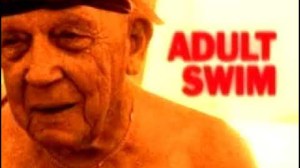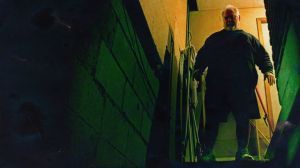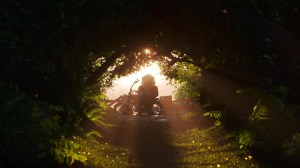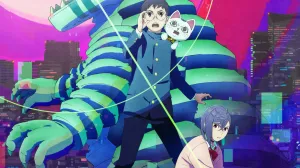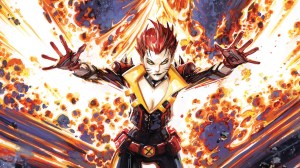A new tale is starting and Candela Obscura and the show’s new Game Master is giving ComicBook.com all the horrifying details. This week, Critical Role will kick off a new chapter of Candela Obscura, its brand new ongoing horror Actual Play series. As promised when the series first kicked off, Chapter 2 of Candela Obscura will be totally self-contained, with viewers not needing to know a thing about either the world of the characters before the start of the three-episode arc. In addition to new cast members Luis Carazo, Zehra Fazal, Brennan Lee Mulligan, Marisha Ray, and Travis Willingham, the new Chapter of Candela Obscura will also feature a brand new Game Master – Spenser Starke, who helped design the Candela Obscura game from the Illuminated Worlds series.
Videos by ComicBook.com
Ahead of the new Chapter’s release, ComicBook.com spoke with Starke about his role in the creation of Candela Obscura, his style of play, and the world’s approach to cosmic horror and how it differs from traditional cosmic horror shows.
ComicBook.com: When you were helping create the world of Candela Obscura, did you, Taliesin, Rowan and the rest of the team intentionally avoid incorporating the works of Lovecraft, and if so, why did you feel that was an important step in creating this world?
Spenser Starke: We really wanted to create our own mythology with Candela Obscura. Along with Lovecraft being distinctly racist and xenophobic, so much Cthulhu media already exists, we felt no desire to tread that ground again. So when we were brought in to build out Candela Obscura as a horror investigation game, we really had to establish what we did want to say. Early on in development, we laid out the ethos of play, the ground rules of the world, and the cycle of the game, and built up from there. We knew we wanted an experience where everyone, especially marginalized folks who have felt ostracized by both traditional gaslamp settings and by Lovecraft in specific, to feel invited and supported at the table. At the same time, we also wanted the place were building to feel horrifying and dangerous, and not just from the creatures coming through the thinnings within the Fairelands, but from the Fairelands themselves–hence the power structures built into the region that provide opportunity to fight back against the oppressive forces of the Triumvirate. We very quickly established the mantra “find the horror in humanity and the humanity in horror” and did our best to support that with everything we created for the game.
Are there additional challenges that come with prepping an Actual Play game based on a game you helped to design?
Starke: I poured so much of my brain into the book we are making, my biggest fear was that all of my best ideas for Candela Obscura were already on the page! But this game always surprises me, because once I sit down with players and ask them questions about their characters, everything becomes easy. Through character creation and the conversations we have in our session zero, I’m always swimming in narrative fodder.
When Candela Obscura first debuted, a lot of fans saw how it drew inspiration from Blades in the Dark. Why use Blades in the Dark as a foundation for Candela Obscura and what does Candela Obscura/Illuminated Worlds do different?
Starke: I came into the project inheriting the Illuminated Worlds system that the brilliant Stras Acimovic and Layla Adelman had built out, so for Rowan and I it was more about marrying the Candela Obscura concept in Taliesin’s head with the scaffolding Stras and Layla had already developed. Stras is a legendary Forged in the Dark designer (Scum & Villainy, Band of Blades, Into The Dark, etc.) so there are certainly hallmarks of that system present in Candela Obscura, but I love so much of what he and Layla crafted specifically for us here. To just hit on one aspect of that, the drive economy is such a player-focused mechanic that really lets you make decisions about when rolls are important to you. I also am really excited about the marks and scars system that Rowan and I developed for Candela specifically, which lets the impacts of the damage you take live with you and, quite literally, change you.
This will mark your first appearance as a GM on Critical Role’s channel, so how would you describe your style as GM? What can Candela fans expect with you behind the GM screen for Chapter 2?
Starke: I aim for any games I run to feel cinematic, emotionally grounded, and collaborative. I think the biggest difference is that I use the language of a camera in the scene more than people might be used to? I also try not to overprep for my sessions, so a lot of what you will see happening is just my reaction in the moment to what the players decide to do. I know what the answer to the mystery is and I have some ideas of what clues might lead them there, but I try to just let the rest unfold organically. My favorite way to play is to lean really hard into what the characters and their players care about most and use that to drive the narrative forward–I want them to feel like the protagonists of their story–so you’ll see a lot of me using the character creation and worldbuilding we did together in our session zero to inform the kinds of mysteries they are investigating.
Candela Obscura: Chapter 2 debuts on Critical Role’s Twitch and YouTube channels this Thursday at 7 PM PT. The VOD version of the series will be posted on Critical Role’s YouTube channel the following Monday.

